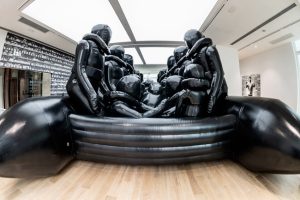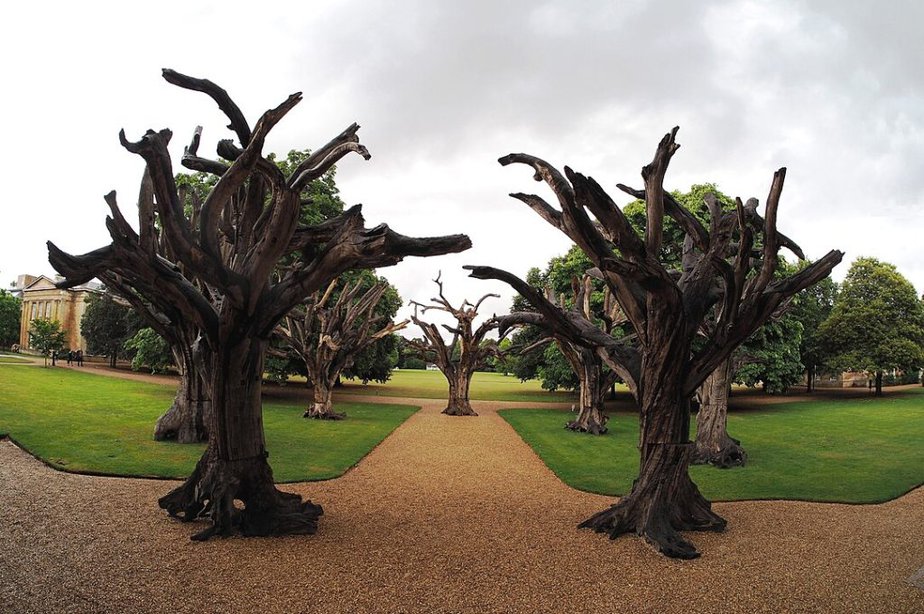Ai Weiwei, a renowned Chinese contemporary artist and activist, is celebrated for his provocative and socially engaged works.
His art spans diverse mediums, challenging political and cultural norms. Through installations, sculptures, and social media, Weiwei addresses human rights, freedom of expression, and the impact of power on society, leaving a global impact.
Ai Weiwei, wields a multidisciplinary practice marked by profound philosophical depth and global influence. His works often blend traditional Chinese craftsmanship with contemporary themes, challenging political repression and cultural norms.
Advocating for human rights, free speech, and individual expression, Weiwei’s art transcends borders. His use of social media amplifies his influence, fostering global conversations.
The Cultural Revolution and his subsequent experiences infuse his creations with personal and political dimensions. Ai Weiwei’s avant-garde approach to art and unwavering commitment to activism render him a critical figure, shaping the discourse on art’s role in societal transformation.
Dropping a Han Dynasty Urn
Dropping a Han Dynasty Urn (1995) by Ai Weiwei is a provocative triptych photograph capturing the artist nonchalantly destroying a valuable ancient urn.

This seminal work challenges cultural norms, critiquing China’s disregard for its historical heritage.
Weiwei’s bold act serves as a powerful commentary on iconoclasm, cultural revolution, and the fluidity of value in art and society.
Sunflower Seeds
Sunflower Seeds (2010) by Ai Weiwei comprises millions of hand-painted porcelain sunflower seeds, meticulously crafted by artisans.

This installation explores themes of mass production, individuality, and collective experience.
Symbolizing China’s rapid industrialization, the work prompts contemplation on the balance between the individual and the collective in contemporary society.
Remembering
Remembering (2009) by Ai Weiwei is a poignant installation that memorializes the victims of the 2008 Sichuan earthquake.

Comprising thousands of children’s backpacks forming the phrase She lived happily for seven years in this world, it critiques the government’s handling of the disaster, emphasizing remembrance and the pursuit of accountability.
Straight
Straight (2008-2012) by Ai Weiwei is a monumental installation featuring 150 tons of rebar recovered from collapsed schools in the 2008 Sichuan earthquake.

Meticulously straightened, the artwork serves as a powerful memorial and critique of government negligence.
Through this process, Weiwei transforms tragedy into a visceral and evocative statement on accountability.
Colored Vases
Colored Vases (2006-2008) by Ai Weiwei involves repurposing ancient Chinese Han Dynasty vases, coating them in industrial paint.

The alteration challenges notions of cultural heritage and authenticity, highlighting the tension between tradition and contemporary expression.
Weiwei’s work serves as a commentary on cultural preservation and societal transformation.
Forever Bicycles
Forever Bicycles (2003) by Ai Weiwei is a monumental installation featuring thousands of interconnected bicycles.

This awe-inspiring sculpture explores themes of mass production, social mobility, and the rapid changes in contemporary China.
The repetitive nature of the bicycles creates a mesmerizing and thought-provoking visual experience, emblematic of Weiwei’s larger societal critiques.
Law of the Journey
Law of the Journey (2017) by Ai Weiwei is a monumental refugee boat installation, symbolizing the plight of displaced individuals.

Measuring over 200 feet, the inflatable structure challenges viewers to confront the global refugee crisis.
Weiwei’s impactful work urges empathy, understanding, and action in the face of human suffering and displacement.
Template
Template (2007) by Ai Weiwei is a thought-provoking installation featuring wooden doors and windows from dismantled Ming and Qing Dynasty homes.

Assembled into a massive cube, the work reflects on China’s rapid urbanization and the loss of traditional architecture.
Weiwei’s piece speaks to the tension between preservation and progress.
Blossom
Blossom (2015) by Ai Weiwei features delicate porcelain flowers, intricately crafted and arranged.

This ornate chandelier both pays homage to traditional Chinese craftsmanship and critiques mass production.
Weiwei’s work, with its fusion of artistry and socio-political commentary, invites contemplation on cultural heritage and the evolving landscape of contemporary China.


